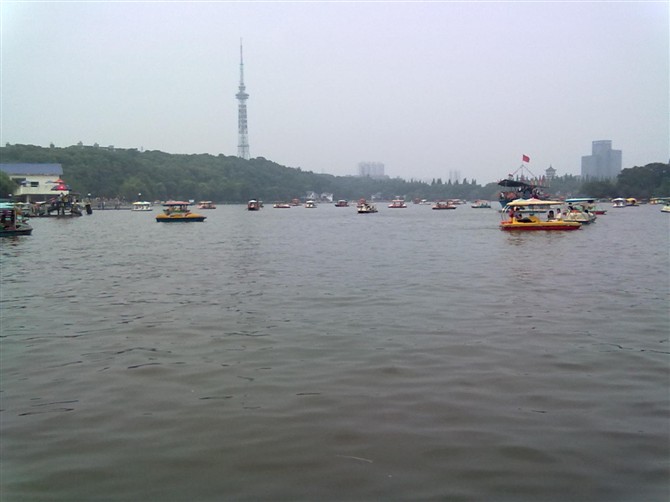Hunan Martyr's Park on:
[Wikipedia]
[Google]
[Amazon]
Hunan Martyr's Park () is an
 Nianjia Lake (), is a man-made lake with an area of .
Nianjia Lake (), is a man-made lake with an area of .
 The Yingfeng Bridge () across the coast and islands is that the imitation Song-dynasty-style () built of wood and bricks, with more than long.
The Yingfeng Bridge () across the coast and islands is that the imitation Song-dynasty-style () built of wood and bricks, with more than long.
urban park
An urban park or metropolitan park, also known as a municipal park (North America) or a public park, public open space, or municipal gardens ( UK), is a park in cities and other incorporated places that offer recreation and green space to r ...
and the largest park in Changsha
Changsha (; ; ; Changshanese pronunciation: (), Standard Chinese, Standard Mandarin pronunciation: ) is the Capital city, capital and the largest city of Hunan Province of China. Changsha is the 17th most populous city in China with a popul ...
, Hunan
Hunan (, ; ) is a landlocked province of the People's Republic of China, part of the South Central China region. Located in the middle reaches of the Yangtze watershed, it borders the province-level divisions of Hubei to the north, Jiangxi ...
, China. Covering an area of , the park was constructed and opened to the public in 1953. It is a renowned scenic spot integrating memory, leisure and tourism. Hunan Martyr's Park has been designated as a "Provincial Key Cultural Protection Unit" by the Hunan government and a "National Patriotic Education Base" by the Publicity Department of the Communist Party of China. In 2009 it was categorized as a "National Key Park" by the Ministry of Housing and Urban-Rural Development
The Ministry of Housing and Urban-Rural Development is a ministry of the People's Republic of China which provides housing and regulates the state construction activities in Mainland China. It was formerly known as the Ministry of Construction ...
.
History
Construction began in 1952 and completed in 1953, and opened to the public in May 1956. It covers an area of , of which land area of , and water area of . The Three-Arched Bridge () and Yingfeng Bridge () were established in 1973 and 1982 respectively. In 1983, Hunan Martyr's Park was listed as a "Provincial Key Cultural Protection Unit" by the Hunan government. The Hunan Folk Culture Village () was constructed in 1992. Since May 2000 Hunan Martyr's Park open to visitors for free. It was restored in July 2007.Climate
Hunan Martyr's Park enjoys a subtropical humidmonsoon
A monsoon () is traditionally a seasonal reversing wind accompanied by corresponding changes in precipitation but is now used to describe seasonal changes in atmospheric circulation and precipitation associated with annual latitudinal osci ...
climate and exhibits four distinct seasons, with an average annual temperature of 17.21 °C. Spring and fall are warm, while winter is chilly with cold wind. Winter temperatures average around 5 °C. Summers are very hot and dry with a July daily average of 29 °C.
Plant resources
There are more than 326 species of plants in the park, of which more than 150 thousand trees and 1.75 million flowering shrubs.Parks
Hunan Martyr's Park is divided into six scenic areas, including the Martyr's Memorial (), the People Leisure Park (), the Water Scenery Park (), the Folk Culture Village (), the Adventure Playground (), and the Landscape Recreation Park ().Tourist attractions
Martyr's Monument
The Martyr's Monument was built in 1959, it can be divided into upper and lower segments. The upper is a monument and the lower is a memorial hall. With the height of , it was made of 2,932 pieces of white marble and granite. An inscription which was written byMao Zedong
Mao Zedong pronounced ; also romanised traditionally as Mao Tse-tung. (26 December 1893 – 9 September 1976), also known as Chairman Mao, was a Chinese communist revolutionary who was the founder of the People's Republic of China (PRC) ...
on the monument. It reads "The Monument of Hunan Martyr's Park" (). There are over 90 martyrs’ portraits and the famous sayings collected from more than 100,000 Hunan martyrs in the memorial hall.
Nianjia Lake
 Nianjia Lake (), is a man-made lake with an area of .
Nianjia Lake (), is a man-made lake with an area of .
Yingfeng Bridge
 The Yingfeng Bridge () across the coast and islands is that the imitation Song-dynasty-style () built of wood and bricks, with more than long.
The Yingfeng Bridge () across the coast and islands is that the imitation Song-dynasty-style () built of wood and bricks, with more than long.
Mid-lake island
The Mid-lake islands (), also known as "Xiaoyang Island" (), was built in 1963 with four islands, occupying of land area.The Ferry of Red Army
In July 1930, Peng Dehuai led the Red Three Regiments () to attack Changsha in Huji Ferry () ofLiuyang River
The Liuyang River (), also known as Liu River () or Liuwei River (), is a right-bank tributary of Xiang River, the largest tributary of Xiang River in Changsha, Hunan Province, China. The river has a length of with its drainage area of , account ...
. After the establishment of Hunan Martyr's Park, Huji Ferry was placed under the Hunan Martyr's Park management and renamed "The Ferry of Red Army" ().
Transportation
* Take subway Line 3 to get off at East Martyrs Park station. * Take bus No. 111 to the South Gate of Hunan Martyr's Park Bus Stop ()References
External links
* {{DEFAULTSORT:Hunan Martyr's Park Parks in Hunan Tourist attractions in Changsha 1953 establishments in China